Spaniards really know how to do soup so it feels like a meal. This one, from senior contributor Alex Province, is layered with flavor. With multiple parts of the pig here, a number of those flavor layers are decidedly porky, but there’s chicken and beef, too.
ON-DEMAND: Listen to Faith and the gang discuss this recipe on The Faith Middleton Food Schmooze®.
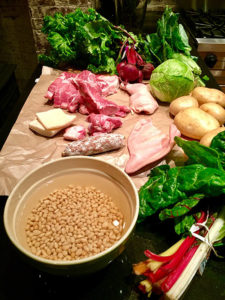
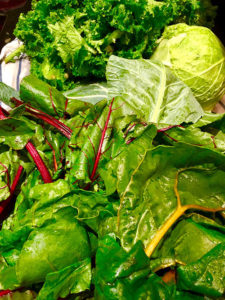 This soup is meant to fill you up! But, there’s also a fresh component. Turnip greens (yes, the greens!), collards, Swiss chard, cabbage, and a full pound of potatoes make this stew-like Spanish classic a hearty, soul-warming meal.
This soup is meant to fill you up! But, there’s also a fresh component. Turnip greens (yes, the greens!), collards, Swiss chard, cabbage, and a full pound of potatoes make this stew-like Spanish classic a hearty, soul-warming meal.
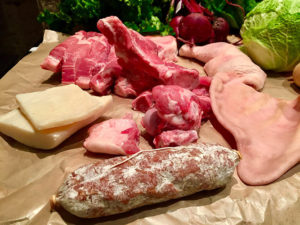
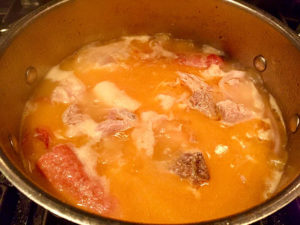
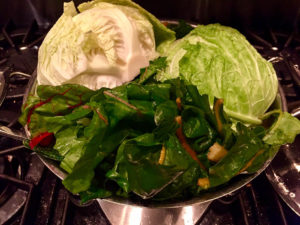
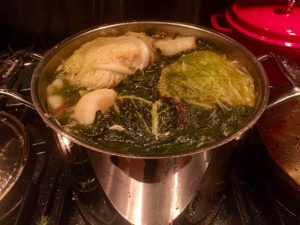
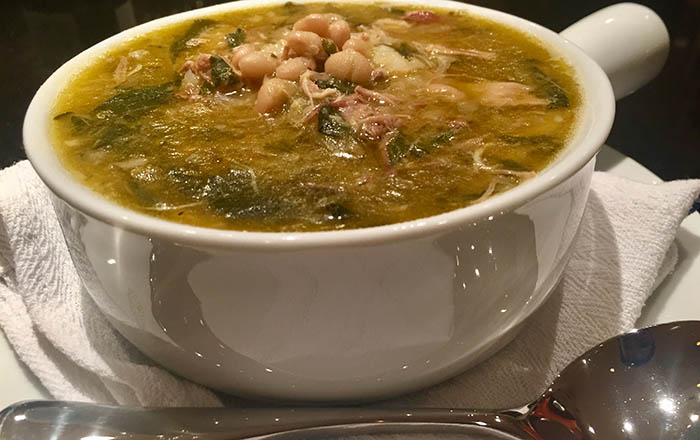
Photos: Alex Province
- 1 pound white beans (Cannellini, Navy, or Great Northern)
- 12 ounces salt pork (rinsed)
- 1 large beef shank
- 2 pounds bone-in country -style pork ribs
- 1 pig's ear (or 1 pound pork soup bones)
- 2 whole chicken legs
- 2 Spanish chorizo sausage links (cured or fresh)
- 1 bunch Swiss chard
- 1 bunch turnip greens
- 1 bunch collard greens
- 1 pound Yukon Gold potatoes
- 1 small cabbage
- kosher salt
- Soak beans overnight and rinse.
- In a large stockpot add beans, salt pork, and enough cold water to cover the beans by 2 inches. Cover and bring to boil.
- Add beef shank, pork ribs, the pig’s ear, and chicken legs, and reduce heat to a medium simmer, and continue cooking covered for 1-1/2 hours. Then add chorizo and continue cooking covered for another hour. (Add water as necessary to maintain 1-2 inches of liquid above beans and meat).
- After about 2-1/2 hours of cooking, carefully remove the meats and any bones that may have fallen off. The chorizo can be cut up and added back to the soup. Season with salt. (Add water if necessary).
- Next peel potatoes and cut into medium chunks. Thoroughly wash greens (removing any thick stems), and tear into large pieces. Finally cut cabbage in half.
- Now, carefully layer the potatoes on top of the beans, then squeeze the greens on top of the potatoes, and jam the cabbage in along the sides. (It will look absurdly full). Use the lid to slowly push greens into the pot and cover best you can. (As the greens cook down, gently close the lid). Continue to gently simmer for an additional hour.
- After 3-1/2 hours of total cooking time, the beans should be very soft, the potatoes fork tender, and the greens should have completely wilted down into the soup. Season with salt if necessary. Serve in a large soup bowl along side a chunk of hearty bread.
Wondering what to do with the meats after straining the broth? Here's a note from Alex on what he does: Typically in a Spanish cocido the cooked meats would be pulled out and deboned, then served alongside the soup with some nice crusty bread. I however, like my mom, add the cleaned and picked-through meat directly back into the soup, right before serving. By “cleaned and picked-through meat” I mean I carefully remove any fat, skin, cartilage, bone, or basically anything not appetizing before adding the meat back into the soup.


